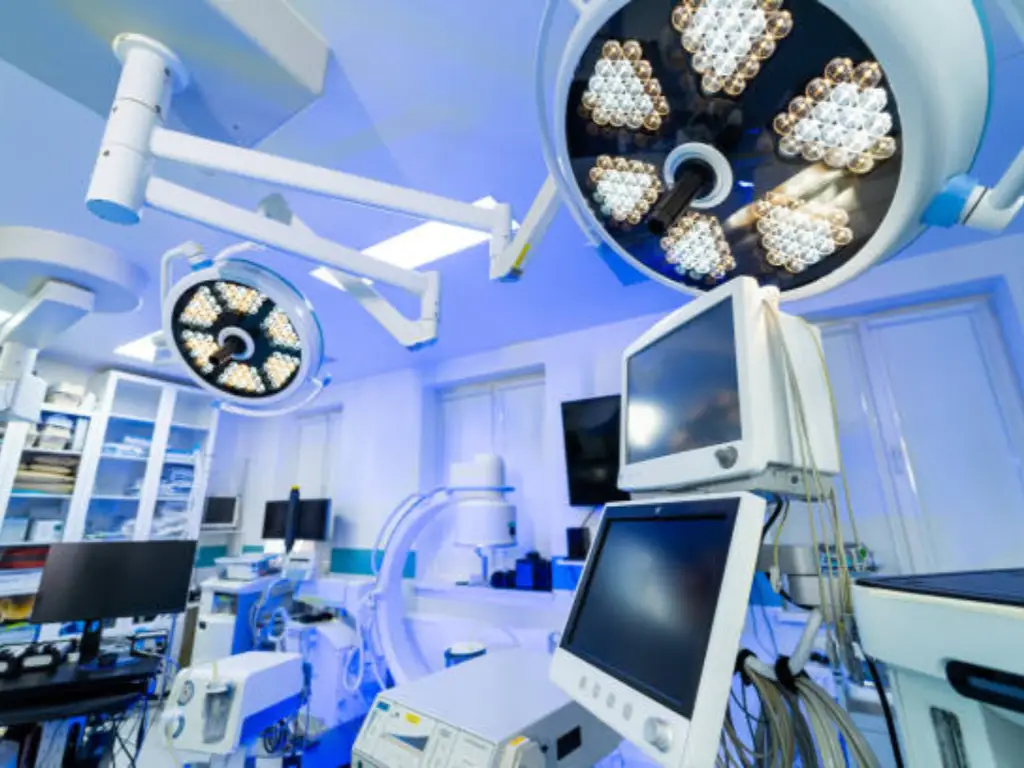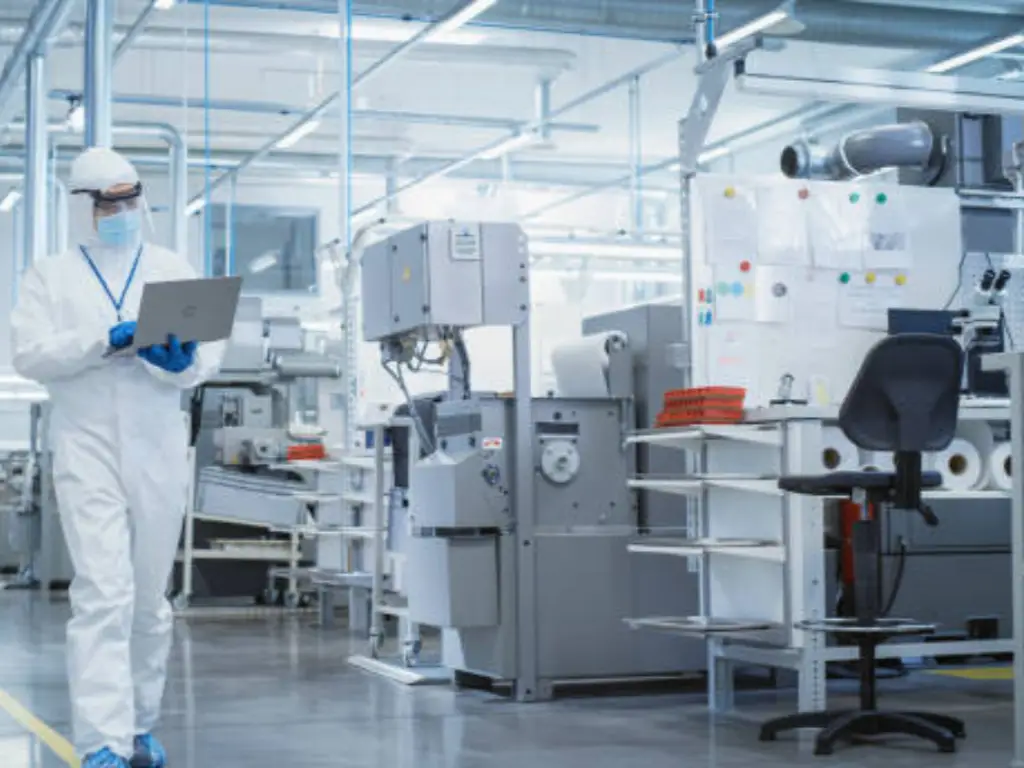Introduction
The advancement of modern medicine is closely tied to the development of other branches of engineering, especially materials science. Every medical device, from the most basic syringe to the most advanced neurostimulator, is a complex interface between a therapy and the human body. The crucial role of appropriate materials cannot be overstated; every device’s safety, effectiveness, and successful implementation depend on the materials selected for the device. Wrong selections result in failing the device, causing bodily injury to the patient, ultimately impacting the patient’s quality of life, and having the device rejected in the approval process. The life-changing potential of the device for the patient makes the importance of material selection a unique responsibility.
This paper will extensively discuss medical-grade materials, the true bedrock of innovation in the medical technology field, and the key criteria in the selection of these materials, the rigorous testing and major forms of material used today, and the high regulation standards that are being applied in their use.

Key Criteria for Selecting Medical Device Materials
Choosing a material for a medical application involves an intricate balancing process while meeting certain essential factors, functional and competing requirements. It requires more than an assessment of a material’s physical characteristics. It requires articulated risk assessments of a material’s risk within and against complex biological systems of the human body, especially for devices used over extended periods of time. Three key attributes of a material comprise the major determinants of the decision: Biocompatibility, mechanical characteristics, and sterilizability.
Biocompatibility: The Non-Negotiable Foundation
For any material geared towards medical applications, the foremost consideration is biocompatibility. It is the capability of a material to carry out its intended function without generating adverse reactions or harmful local or systemic biological responses in the host. An unsuitable material can lead to chronic inflammation, thrombosis, immune response, rejection, and other toxic reactions. Biocompatibility is tested according to the ISO 10993 standards, which include assessments of biologically active materials, cytotoxicity, sensitization, and effects of implantation. Such materials will be tested for other structural and utility functions only after passing the verification of biological safety.
Mechanical Properties: Matching Strength and Durability to Function
After biocompatibility is established, the material must still show physical durability to consistently perform its function for the intended service life. The necessary mechanical properties depend solely on the application. For load-bearing orthopedic implants, such as hip stems and artificial joints, a delicate balance of flexibility and high impact strength and exceptional fatigue resistance is needed to endure millions of movement cycles without fracturing. For surgical instruments, however, high hardness and wear resistance are necessary to preserve a sharp edge and resist degradation. In addition, the material elastic modulus—stiffness—will be extremely important in orthopedic applications. Natural bone stiffness mismatches can cause stress shielding, resulting in bone loss around the implant.
Sterilizability: Ensuring Material Integrity After Cleaning and Disinfection
Almost every single medical device needs to be sterilized to remove microbial contamination. The different sterilization methods (autoclaves (high-pressure steam), gamma irradiation and ethylene oxide (EtO) gas) have to be considered when choosing the device materials. Some polymers may become brittle or discolored after gamma irradiation, while some devices may warp or melt under the high temperatures of the autoclaves. Hence, to ensure safety, functionality, and dimensional stability of the device post-sterilization, you must consider the intended sterilization method first during the initial material selection.
The Core Metal Materials Used in Medical Devices
The construction of medical devices has relied upon alloys and metals since the beginning of the industry. The success lies in identifying the best metals and specific materials for particular applications with unique properties. They have special characteristics of great strength, resistance, and reliability. They find their most common application in the case of applications that need structural integrity, both load-bearing medical implants and enclosures around the complex diagnostic equipment.
| Feature | Stainless Steel (316L) | Titanium Alloy (Ti-6Al-4V) | Aluminum Alloy (6061) |
| Density (g/cm³) | ~8.0 | ~4.4 | ~2.7 |
| Tensile Strength (MPa) | 500 – 700 | 830 – 1100 | 290 – 310 |
| Elastic Modulus (GPa) | ~193 | ~114 | ~69 |
| Biocompatibility | Very Good (short-term) | Excellent (long-term implant) | Not suitable for implant |
| Primary Advantage | Strength & Corrosion Resistance | Biocompatibility & Strength-to-Weight | Low Weight & Formability |
| Typical Medical Use | Surgical instruments, bone screws | Orthopedic/dental implants, stents | Device housings, chassis |
Stainless Steel: The Versatile Workhorse
Medical-grade stainless steel, specifically grade 316L, is a suitable material that is utilized across materials in the entire healthcare sector. This alloy is mainly made out of iron, chromium, nickel and molybdenum but is valued due to its high corrosion resistance, a quality that is bestowed by a passive chromium oxide layer that develops on its surface. It presents an excellent blend of high strength, ductility and cost effectiveness. Its main use is in surgical tools such as scalpels and forceps, orthopedic fixation tools such as bone plates and screws, and permanent medical equipment such as sterilization trays and instrument carts. Although its application in long-term implants has been mostly replaced by titanium, it is an irreplaceable material in temporary gadgets and external devices.
Titanium and Its Alloys: The Gold Standard for Implants
The most popular material used in permanent implants and devices that are going to be directly exposed to bone and tissue is titanium, especially Ti-6Al-4V (6 percent aluminum and 4 percent vanadium) alloy. It is even more dominant because it has an unsurpassed combination of properties. It is an extraordinary strength-to-weight ratio, as strong as steel, but a much lower density. Moreover, it has better biocompatibility and corrosion resistance due to a highly stable and inert titanium dioxide layer that forms immediately on its surface. Most importantly, titanium is the only material that can osseointegrate, which is the growth of natural bone on the implant surface, which forms a good fixation that is strong and stable, biologically. It is the best material to be used in orthopedic joint replacements, dental implants and cardiovascular solutions like stents.
Aluminum Alloys: The Choice for Lightweight Structural Components
Although aluminum alloys are not generally employed in the manufacture of implantable devices due to the risk of ion toxicity, they are necessary in the manufacture of external medical equipment. Alloys like 6061 and 5052 provide a good compromise in terms of strength, weight and formability. This portability is essential in portable devices, like mobile ultrasound systems and patient monitors, where one needs mobility. Aluminum is also a good thermal conductor, and so it is appropriate in housings that need cooling of internal electronics. Surface treatments such as anodizing can also be used to increase the level of its corrosion resistance. Its machinability, as well as its ability to be molded into complicated forms, makes it even more useful in such structural applications. More importantly, aluminum is also a great electromagnetic shielding material and this is important in shielding sensitive internal electronics against interference as well as ensuring that the electromagnetic compatibility (EMC) of the device. As a result, the material of choice in most healthcare applications is aluminum when it comes to device enclosures, internal chassis, support frames and control panels.

Essential Polymers in the Medical Field
The medical industry has also been transformed by versatile materials like polymers, where sterile, single-use devices can now be mass produced and design flexibility is possible that metals cannot provide. The plastics used inside hospitals are medical-grade plastics, which can be flexible tubing up to high-strength components that are currently implantable. Examples of these include Polyvinyl Chloride (PVC), which is used widely in IV bags and IV tubing; Polyethylene, especially Ultra-High Molecular Weight Polyethylene (UHMWPE), the low-friction bearing surface in joint replacement; and Silicones, because of their softness and biocompatibility with the body, used in catheter and seal manufacture. On the high-performance side of the spectrum, Polyetheretherketone (PEEK) has become one of the leading alternatives to metal in spinal fusion cages and orthopedic trauma plates with the benefit of bone-like strength and radiolucency, enabling clear imaging during the post-surgery period.
Advanced Ceramics and Their Specialized Applications
The ceramic materials are in an exclusive niche within the medical devices, which is characterized by the utmost hardness, high compressive strength, chemical inertness, and superior wear resistance. A biological-inert ceramic, like alumina and zirconia, is much harder and wears better than alloy metals, and thus they are the choice of material to be used by the articulating surfaces of orthopedic implants, the femoral heads on a total hip replacement. Their well-polished surfaces reduce friction and wear debris which causes implant loosening. Aesthetic quality and biocompatibility of zirconia have also created a preference in crowns and implants in dentistry. Moreover, bioactive ceramics such as hydroxyapatite serve as layers on metallic implants and provide the active support of bone formation and improve the process of osseointegration.
Applications of Medical Device Materials in Modern Healthcare
The theoretical characteristics of certain materials are converted into actual performing apparatus which characterize modern medical procedures. The material is determined by the application and the application is made by the material. This principle may be observed in three different types of medical devices.
Implantable Devices
In the case of devices that are implanted into the human body, the main concern is the biocompatibility and stability over time. Titanium and titanium alloys are the default materials of orthopedic and dental implants, load-bearing because they have the ability to integrate with the bone. Cobalt-chromium alloys also apply in joint replacements because they have better wear resistance. PEEK presents an alternative of spinal fusion devices that should be without metal. In the case of soft-tissue implantation, suitable flexibility and inertness are obtained using medical-grade silicones. It is because of the creation of such highly specialized, biocompatible materials that the whole area of implantable medicine was made possible.
Surgical Instruments
The materials on which surgical instruments are made should emphasize strength, corrosion resistance, and the ability to retain a sharp cutting edge. The most common material is austenitic stainless steel mostly grade 316L. It is hard enough to withstand deformation in use, is sufficiently resistant to corrosion to take repeated exposure to bodily fluids and the severe conditions of sterilization, and can be sharpened to a fine and lasting edge. In the case of specialized tools, these can be made out of other materials, but stainless steel is the cornerstone of the modern surgical toolbox.
External Equipment: Housings, Casings, and Support Structures
In applications where the device is not placed into the body, the material demands change to be more focused on structural integrity, durability, and in many cases, light weight. The chassis and external enclosures of large diagnostic machines, including MRI and CT scanners, are often made of aluminum alloys and stainless steel which gives them rigidity and electromagnetic shielding. The housings of smaller and portable devices are usually made with polycarbonate and ABS polymers, and provide impact resistance and flexible designs. These materials offer the benefits of safeguarding delicate internal electronics and a cleanable, long-lasting exterior that is needed in the clinical environment.
Regulatory Standards for Medical Device Materials: FDA, ISO, and CE Marking
A material cannot be applied to a medical device merely because it has the right physical characteristics, but it must be shown that it is safe and effective using a stringent regulatory structure before it can be called one of the FDA-approved materials used in a medical device. These coordinating systems provide global patient safety.
- FDA Framework (United States): The Food and Drug Administration (FDA) in the U.S. has a risk-based tier system. Class I devices (e.g., tongue depressors) are not associated with high risk and Class II devices (e.g., infusion pumps) need special controls and more substantial material safety data through a 510(k) filing. Class III medical devices (e.g., pacemakers) are frequently life-sustaining and require the most rigorous scrutiny with a Premarket Approval (PMA). It involves tedious data on the biocompatibility of the material, material composition, chemical composition and long-term stability, to demonstrate that the material is safe, and thus is one of the approved materials of fda.
- International Organization of Standardization: ISO 10993 The International Organization of Standardization offers the internationally accepted basis of material safety with ISO 10993, “Biological evaluation of medical devices.” It is not a single test, but a set of standards that informs a risk-based approach. The nature and duration of contact with the body determine the tests required, such as short-term contact of the skin or permanent implantation. The ISO 10993 compliance is regarded by the regulators all over the world (the FDA and European authorities are not an exception) as the primary evidence of biocompatibility.
- CE Marking and EU MDR (Europe): CE marking means that a device in Europe meets the Medical Device Regulation (MDR). In order to receive it, manufacturers are required to develop a complete Technical File, containing detailed material information that is in accordance with ISO 10993. A third-party auditor (so-called “Notified Body”) audits this file and certifies that the materials and the device comply with the strict health and safety standards of the EU.

From Raw Material to Precision Part: The Critical Role of Expert Manufacturing
Choosing the right material is just the beginning. Only the manufacturing process can turn an unrefined sheet or block of stainless steel or aluminum into a working component of a precision piece of equipment used in medical settings. This becomes even more relevant for the outer housings and structural components of medical devices. At this stage of the process, the precision engineering of the housing must preserve the material’s integrity while also meeting the medical industry’s strict requirements for close tolerances and particular surface attributes. Imperfections in the design and construction of the housing—rough edges, weak welds, and inaccurate bends—can disable the device’s assemblability, cleanability, and safety.
How TZR Helps Achieve The Critical Transformation
As a professional sheet metal fabricator for the medical device industry, TZR offers a comprehensive partnership that extends from initial design and prototyping to full-scale manufacturing. Our deep expertise with materials, including stainless steel and aluminum, is applied directly to the fabrication of medical-grade components, ensuring the final part fully embodies the material’s intended properties. This is achieved through controlled processes: high-precision laser cutting for clean, burr-free edges; CNC bending for complex, repeatable geometries; and expert finishing for seamless, sterilizable joints.
At TZR, our commitment to excellence exceeds standard ISO quality regulations. We implement strict production standards, beginning with rigorous raw material inspection, to guarantee compliance and reliability through every manufacturing step. This meticulous approach facilitates the critical transformation from a certified raw material into a finished medical device component you can trust.
If your team is developing a new medical device and has questions about stainless steel or aluminum structural parts, please contact our engineers. We are happy to share our material and manufacturing expertise to support your project.
Future Trends in Medical Device Materials
Driven by the desire for improved clinical results, the sector surrounding medical materials continues to grow. Here are a few noteworthy trends.
- Additive Manufacturing (3D Printing): This technology is a game-changer for personalization. It goes beyond making patient-specific scaffolds for titanium or PEEK powders and advanced bio-inks for tissue engineering. It is also capable of creating complex, porous lattice structures that imitate natural bone. This architecture promotes osseointegration, resulting in long-term stability of the implants and enduring implant durability.
- Bioresorbable and Bioactive Materials: The construction of materials that bioabsorb and dissolve is rapidly advancing. Temporary stabilizing support with bioresorbable polymers and magnesium alloys that heal tissue stents and fixation screws is becoming commonplace. This decreases patient trauma and healthcare costs by eliminating the need for secondary removal surgeries. Moreover, bioactive materials are designed to provoke beneficial and desired responses, actively stimulating osteogenesis and bone formation.
- Active devices are the newest innovations: Included are the new advanced surfaces designed to minimize bacteria attachment and biofilm formation, which is a leading factor in the failure of implants. As mentioned, advanced surfaces are designed to be more constructive, as plasma spray coatings are made to improve osseointegration and physical vapor deposition is made to integrate antimicrobial coatings. Also, the new research on smart materials means devices that respond to a patient’s body and perform tasks such as drug delivery, and shape changing to facilitate healing.
Conclusion
The materials incorporated into medical devices are critical to patient outcomes and regulatory compliance. The path materials take to become final products is determined by the principles of biocompatibility, evaluation of the relevant mechanics, and adherence to regulations. The various properties of metals, polymers, and ceramics make them an ideal choice for engineers to address an expansive array of clinical issues. The improvement of components, the combination of new innovative materials and sophisticated manufacturing will continue to shape the market for medical devices which are progressively safer and more effective. This partnership continues to be the key roadmap towards commercializing scientific possibilities into practical advancements in human health and the technology we depend on is constructed on a platform of quality and safety.




